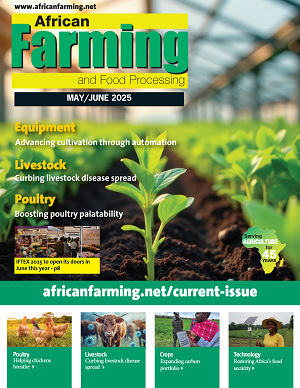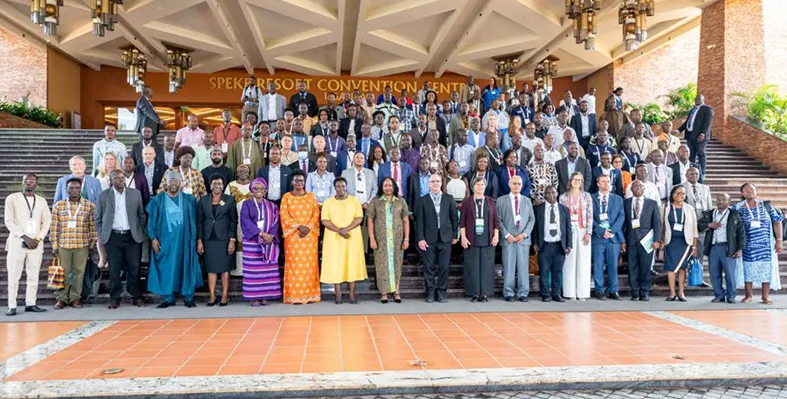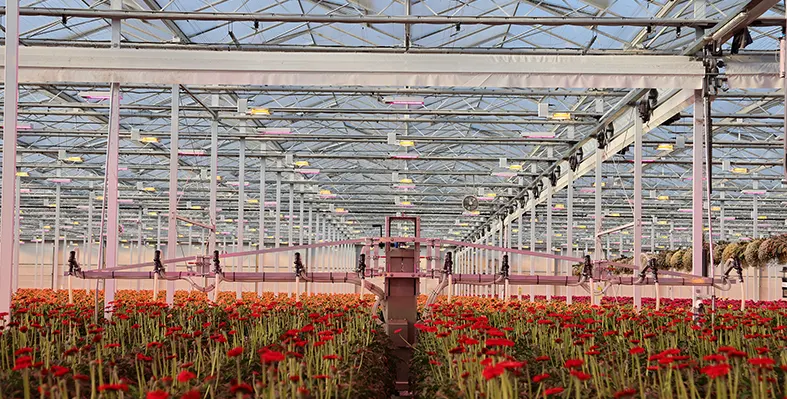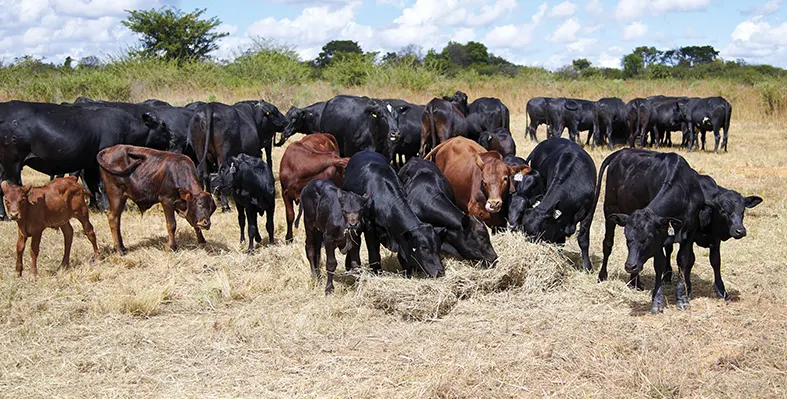In The Spotlight

This initiative invites young people aged 12-18 globally to create robots that tackle food insecurity.
At the opening of the AI for Good Summit in Geneva, the Food and Agriculture Organization (FAO) and the International Telecommunication Union (ITU) launched the Robotics for Good – Youth Challenge 2025–26
This initiative invites young people aged 12-18 globally to create robots that tackle food insecurity.
QU Dongyu, FAO Director-General emphasized the importance of empowering youth in the fight against hunger. "This challenge is not just about robotics," he said, "It is about empowering youth to become agents of change in the fight against hunger."
QU Dongyu also addressed the growing digital divide, which is hindering progress in low-income and rural areas. "The digital divide is becoming development divide," he stated. With 1 in 3 people worldwide still offline, especially in developing regions, AI's potential to reduce poverty and improve resilience remains out of reach for many.
FAO is working to bridge this gap by using AI to enhance global agrifood systems. Their digital tools help with precision agriculture, resource management, early warning systems, and market access. One of their successes includes AI-powered advisory services for smallholder farmers, which have reduced costs from US$30 to US$3 per farmer.
The FAO also uses AI for remote sensing and geospatial analysis to monitor drought, water stress, and crop health. Additionally, FAO is developing a knowledge bot and the world’s first agrifood-focused foundation AI model to provide context-specific solutions.
FAO is committed to ethical AI use, advocating for transparency, human dignity, and "do no harm." QU Dongyu concluded by urging partners to ensure AI is inclusive, transparent, and human-centered. "We must work together to address global challenges and accelerate progress in agrifood systems."
The AI for Good Summit, co-organized by the ITU and Swiss Government, gathers experts and stakeholders to explore AI's role in tackling global challenges.
Girma Amente in a recent press conference revealed that Ethiopia has covered seven million hectares of land with seeds during the current rainy season
Girma stated that the country is working towards achieving its food sovereignty goals. He pointed out that the agricultural sector has shown strong performance over the past years, especially during the summer, spring, and irrigation farming seasons.
According to Girma, Ethiopia plans to sow seeds on a total of 21 million hectares of land this season. He said, “Some hectares of the land have already been covered with cereal seeds such as maize and the likes.” He added that crops like teff, wheat, and barley are currently being sown in different areas based on the local ecological conditions.
Girma also stated that this year’s harvest is expected to be better due to the use of modern technologies and awareness-raising campaigns among farmers. Fertilizers, improved seeds, and other essential agricultural inputs have been delivered to farmers on time, which will help boost productivity and yields.
He emphasized that summer is the most important farming season in Ethiopia, as 70 percent of the country’s annual harvest is grown during this period. This year, 13 million hectares will be cultivated using cluster farming methods. This marks an increase compared to the same period last year. He stressed the importance of expanding cluster farming as it significantly increases productivity and helps improve farming practices.
In addition, the minister reported that 6 million hectares of land have been cultivated through mechanized farming, which is an increase of one million hectares compared to last year. He pointed out that the adoption of technology in agriculture is growing rapidly and is playing a key role in modernizing the sector.
Girma said a target has been set to harvest over 659 million quintals of crops by covering 21 million hectares of land in this meher season. “The major breakthrough is that farmers’ use of technology has been widely growing,” he added.
The ALMACO D1 Data Collection Unit is a modern solution designed to deliver precise, real-time plot harvest data for seed research
Built with durability and an intuitive interface, the D1 accurately measures test weight, shell weight, and moisture levels—helping researchers make faster and better advancement decisions.
D1 easily integrates with existing systems, making it a cost-effective upgrade for research professionals. It is fully compatible with ALMACO plot harvesters, seed processing lines, individual threshers, and is the only solution that works with ALMACO packagers.
With a single device, researchers can collect harvest data across multiple crops. D1 supports nearly all crop types, including corn, soybeans, wheat, sorghum, canola, sunflowers, and more. ALMACO experts emphaasised,"No matter the crop, D1 measures with accuracy and precision.along with that moisture and weight curves are stored in the harvest software and not the D1 control box, so there is no need to switch units between harvesters."
Built for all-weather use, the D1 doesn’t need to be removed during poor weather, transport, or overnight storage. It is water, rust, and dust resistant, and performs reliably in both hot and cold conditions. To improve visibility, the unit can be placed out of sight and is fully operated through the main harvest software display. D1 has no internal battery or separate display, reducing maintenance and eliminating the risk of data loss due to power failure.
The interface is user-friendly and includes built-in diagnostics to maximize uptime. Its intuitive design helps reduce training time and allows more time for field data collection. Calibration is simple with step-by-step guides, and the system supports any moisture blade size, including larger ones for greater precision. Experts also focused by stating,"Calibration supports any size moisture blade for client accuracy specifications—including large moisture blades for high data precision."
Backed by decades of experience, ALMACO developed the D1 to meet the specific needs of the seed research industry, offering an efficient, accurate, and low-maintenance solution for real-time data collection.
Tickets are now on sale for Agritechnica 2025, the world’s largest trade fair for agricultural machinery, taking place from 9-15 November in Hanover, Germany
Organised by the DLG (German Agricultural Society), this year’s show is set to welcome around 430,000 visitors and 2,700 exhibitors from over 50 countries. Held under the theme “Touch Smart Efficiency”, Agritechnica 2025 introduces a new visitor concept: “7 Days – 7 Topics”, focusing on specific professional groups each day. With all 23 exhibition halls fully booked, interest is high—76% of surveyed potential visitors have already committed to attending.
This year also marks the debut of the digital farm centre – presented by FarmRobotix, showcasing innovations in robotics, automation, and artificial intelligence. Other highlights include DLG’s Expert Stages, startup showcases, and international networking events. The parallel systems and components exhibition will serve as a central B2B hub for suppliers in the agriculture and off-highway sectors.
New features for dealers include the international dealer centre, business matchmaking, and optional listings in the official event app.
Day tickets start at €29, with two-day and special event options also available. For the first time, tickets include free access to local public transport in the Hanover region.
Visitors can also take advantage of special trains and group travel packages from Germany and Switzerland.
Tickets and the full programme are available at the official website.
A new camera and AI system is now helping dairy farmers improve cow health, productivity, and herd management
The cutting-edge HerdVision technology, now available exclusively through Wynnstay, measures body condition score (BCS) and mobility, giving farmers instant insights to act on. The camera fits into any parlour or race and captures a bird’s-eye view of cows as they pass underneath. It automatically provides a BCS and mobility score, which can be viewed on a desktop or app. The key benefit lies in how farmers use this data, supported by Wynnstay’s team of dairy experts.
Matt Dobbs, CEO of HerdVision,“This partnership brings the benefits of early identification of problem cows alongside support from Wynnstay's specialists, nutritionists and range of products, ensuring that a problem will be quickly addressed. Wynnstay's superior knowledge of dairy farming, range of expertise and wide product portfolio made them logical partners to bring the benefits of vision technology to UK dairy farming.”
Lameness is one area where the system shows real value. “With access to the data from the HerdVision reports, and working alongside the farm’s foot trimmer, we can identify problem areas which may be causing issues like sole bruising or white line disease,” says Rebecca Reed-Downes, dairy technical specialist at Wynnstay. He added,“If it’s an issue of digital dermatitis, we could dig into the farm’s footbathing routine, and refine the system.”
Nutritionists also benefit. “For nutritionists, this will provide vital data on BCS changes throughout lactation.Used correctly this information will allow for improvements in fertility, health and production”says David Jones, dairy nutritionist at Wynnstay.
The system costs £5,900 with a free first-year subscription and is eligible for funding through the Farming Equipment and Technology Fund.
Koppert and Fresh Energy have renewed and expanded their partnership after the successful launch of Egypt’s first large-scale biological crop protection programme in commercial greenhouse farming last season
The new agreement, signed on 10 July, marks a major step forward in Egypt’s horticulture sector. Present at the signing were Henri Oosthoek (Director of Strategy & Alliances), Boaz Oosthoek (Business Unit Manager Middle East Africa), Yassin Lahiani (Area Manager), Alex Tetteroo (Consultant), and Fresh Energy’s CEO Mohamed Mohab and Managing Director Yousra Mahmoud.
The renewed deal will see Koppert’s biological crop protection methods used across 300 hectares of greenhouse cultivation for sweet peppers. This marks a significant expansion from the initial project and highlights the ongoing commitment of both companies to sustainable farming.
Fresh Energy is a key player in Egypt’s agriculture sector, involved in both greenhouse and open-field farming. The company supplies premium fruits and vegetables to top supermarket chains. In partnership with local firm BioEgypt, Fresh Energy and Koppert successfully introduced a fully biological crop protection system on a commercial scale for the first time in Egypt. This approach allowed the company to meet customer expectations by delivering high-quality produce that complies with strict Maximum Residue Levels (MRLs).
This continued partnership is built on a shared goal to promote sustainability and innovation in Egyptian horticulture. As growers face increasing pressure to reduce chemical usage and meet international food safety standards, biological solutions are becoming more important. This collaboration positions Egypt as a leader in sustainable greenhouse farming in the region, potentially influencing neighbouring countries and global markets.
Yassin Lahiani, area manager at Koppert said, “We are proud to have been the first to implement a successful biological program in Egypt together with Fresh Energy and our local partner BioEgypt. The achievements of last season have now resulted in an extended partnership, allowing us to support even more growers and greenhouse operations in adopting sustainable production practices.”
Mohamed Mohab, CEO of Fresh Energy stated, “We look forward to a long-term journey defined by mutual growth and prosperity. I am grateful for Koppert’s commitment to this partnership and the shared vision that brings our organizations together. We appreciate this cooperation and believe our partnership will pave the way to more remarkable initiatives and enterprise prospects. Koppert’s experience, combined with ours, will help us achieve Fresh Energy’s vision faster and more efficiently. We look forward to a successful collaboration and a beneficial relationship in the future.”
Both companies are now focused on scaling up their efforts to support Egypt’s move towards cleaner, safer, and more sustainable agricultural methods.
South Africa's Select Committee on Agriculture, Land Reform and Mineral Resources has called on the Department of Electricity and Energy to prioritise the local manufacturing of renewable energy products instead of relying on imports
This came after the department briefed the committee on the implementation of the Renewable Energy Sector Master Plan (RESMP).
During the presentation, the department outlined the key goals of the Master Plan, describing it as a driver for industrial development that aims to meet the growing demand for renewable energy, especially solar and wind power. A strong focus was placed on the importance of promoting inclusive economic growth by involving previously disadvantaged groups, with particular emphasis on youth and women, in the renewable energy sector.
The committee was briefed on several initiatives under the Master Plan. These included the localisation of renewable energy production, the rollout of skills development programmes, and the establishment of proper monitoring systems to track progress. Committee members stressed that the plan should not only address energy needs but also promote job creation and skills development.
Members raised concerns about the involvement of vulnerable communities, especially those in rural areas, asking the department how it plans to ensure these groups benefit from the Master Plan. The department responded by affirming its goal to ensure that at least 50% of job opportunities go to youth and marginalised communities. It also highlighted ongoing efforts to identify skills needs and expand internship and training programmes.
Regarding local manufacturing, the committee questioned the current focus on training people only for assembly work rather than producing renewable energy components like solar panels and charge controllers. They urged the department to move beyond just assembling and start developing the capacity to manufacture such products locally. In response, the department confirmed that steps are being taken to explore and expand local manufacturing opportunities.
The committee also flagged concerns about regulatory hurdles, particularly a moratorium from the Department of Defence, which has delayed the issuing of letters of no objection needed by Independent Power Producers (IPPs). They warned this could slow down progress in renewable energy projects. The department assured the committee it would work with the relevant departments to address these challenges and avoid any delays for IPPs.
Overall, the committee urged the department to speed up efforts to localise renewable energy production and ensure broad community participation.




































